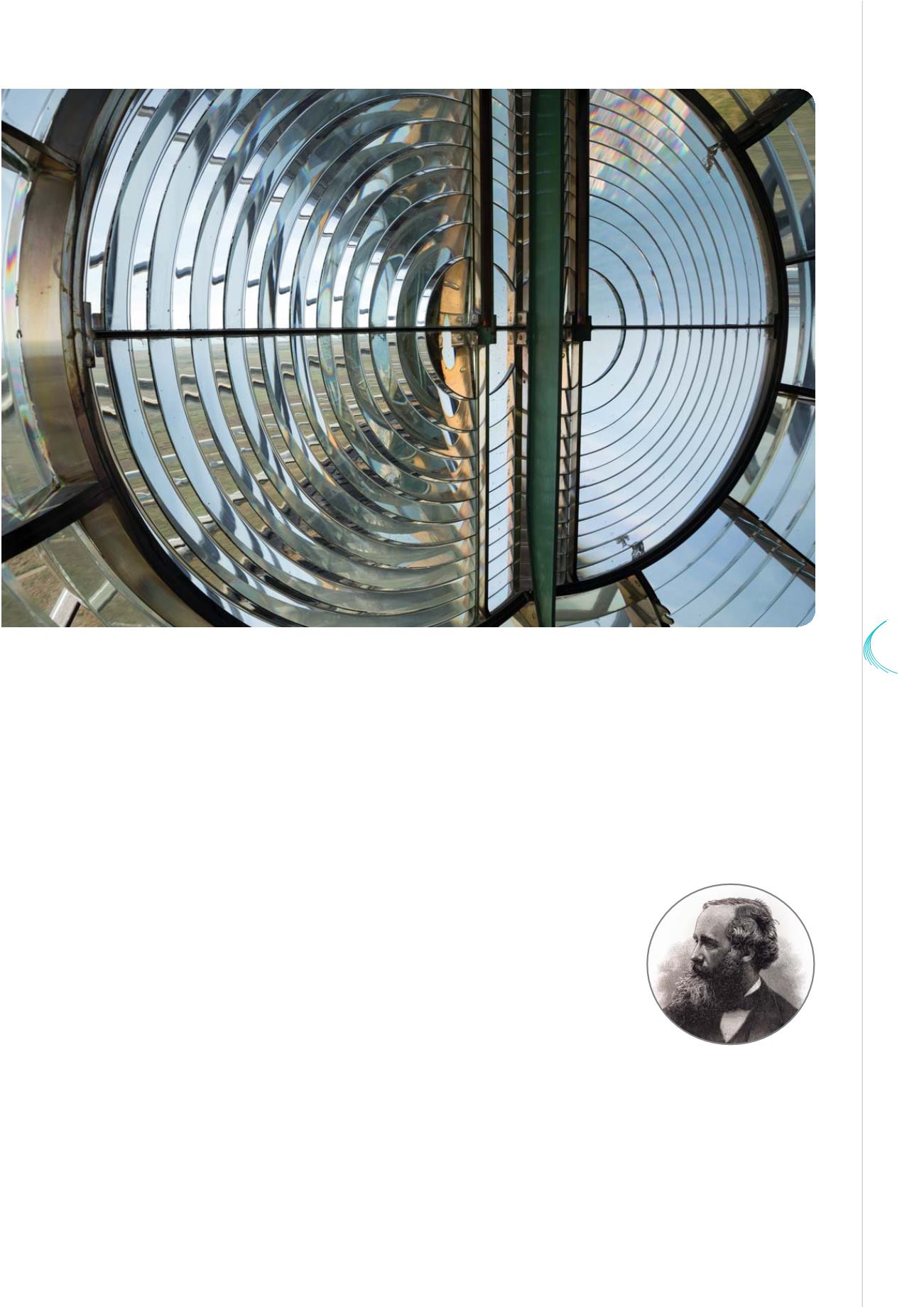

350
YEARS
OF
SCIENCE
69
© Stphane Bidouze - Fotolia
Huge Fresnel lens in a lighthouse
James Clerk Maxwell
(1831-1879)
© nickolae - Fotolia
In these times of debate and sometimes opposition between fundamental research and applications, it
should be pointed out that the theoretician Augustin Fresnel was also the father of all modern lighthouses,
that he contributed to conceive them as an engineer of the corpse of the Ponts et Chaussées, and that
they are equipped with the marvellous Fresnel lenses. As for his theory of wave optics, it is so perfect that
we may continue to use it without making any change to it. But in 1818, Fresnel still lacked the answer to
this question: what is the nature of this quantity that vibrates as it propagates?
It was the great Scottish genius James Clerk Maxwell who gave the answer, in
1864. He had written equations enabling to describe the whole set of facts
that were known at the time in the fields of electricity and magnetism. In
any true physical theory, equations imply more than what has been built
into them; they have unexpected solutions whose traces may be looked
for through experimental observation. In the case of Maxwell’s equations,
their novelty was impressive: some solutions of the equations indicated
waves propagating at a speed Maxwell calculated. And he concluded: “
This
speed is so close to that of light that it seems we have good reason to conclude that light
itself [...] is an electromagnetic disturbance in the form of waves propagating through the electromagnetic
field according to the laws of electromagnetism
.”


















